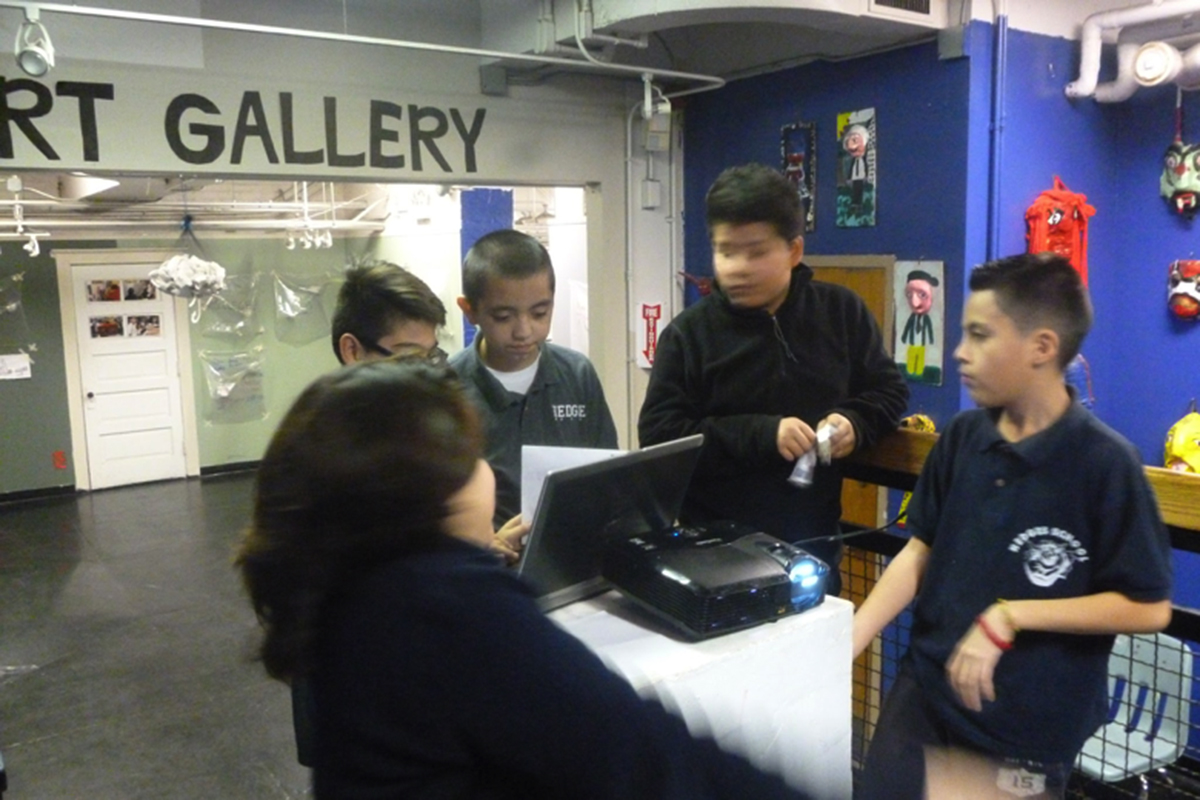Privilege and the Ability to Become a Chameleon
By Jequeline Salinas and Lilia Ruiz
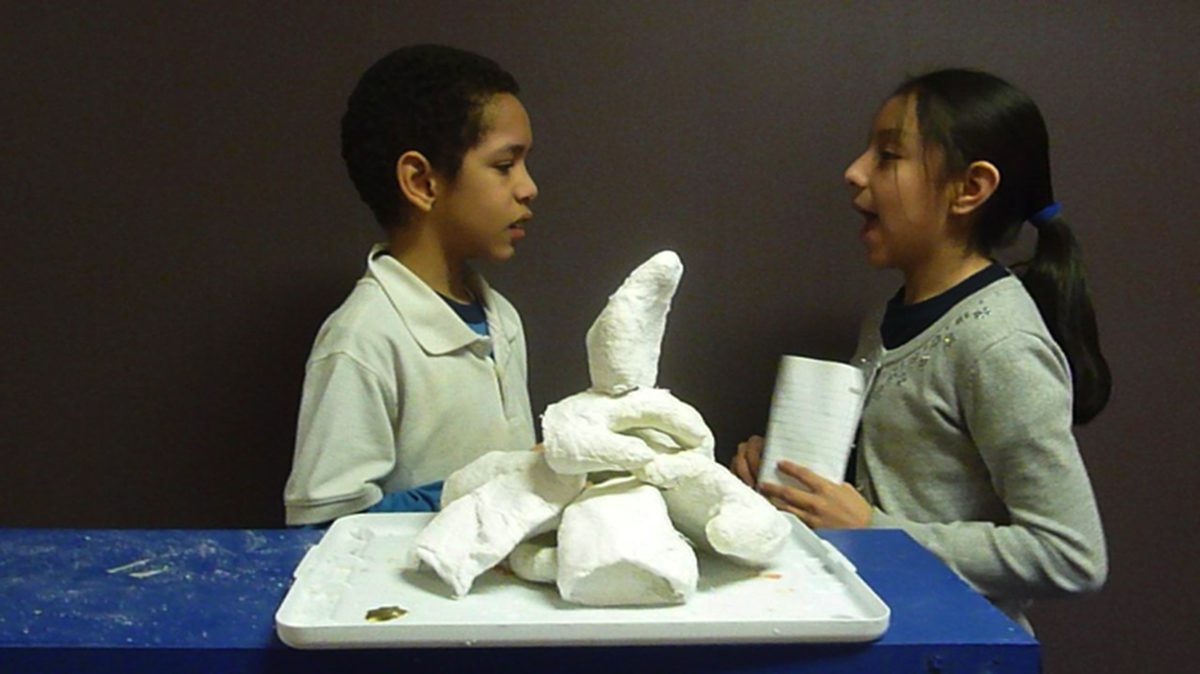
Fifth and sixth grade students discovered their unique sense of privilege through collaborative visual art performances. The students were from the Back of the Yards neighborhood, which has a large population of low-income immigrant residents who are pressured to suppress aspects of culture in the name of broader U.S. assimilation. Students studying human rights in their Language Arts class explored how these rights related to their perceptions of privilege. Starting with the concept of how chameleons visually adapt to their environments, students examined the ways in which they can blend in and adjust in response to different situations. Students then participated in performative works in which they affirmed their voice in choosing how to adapt to various contexts. In the process, they came to understand their ability to change identity and visibility in response to challenges as a type of privilege and a source of power.
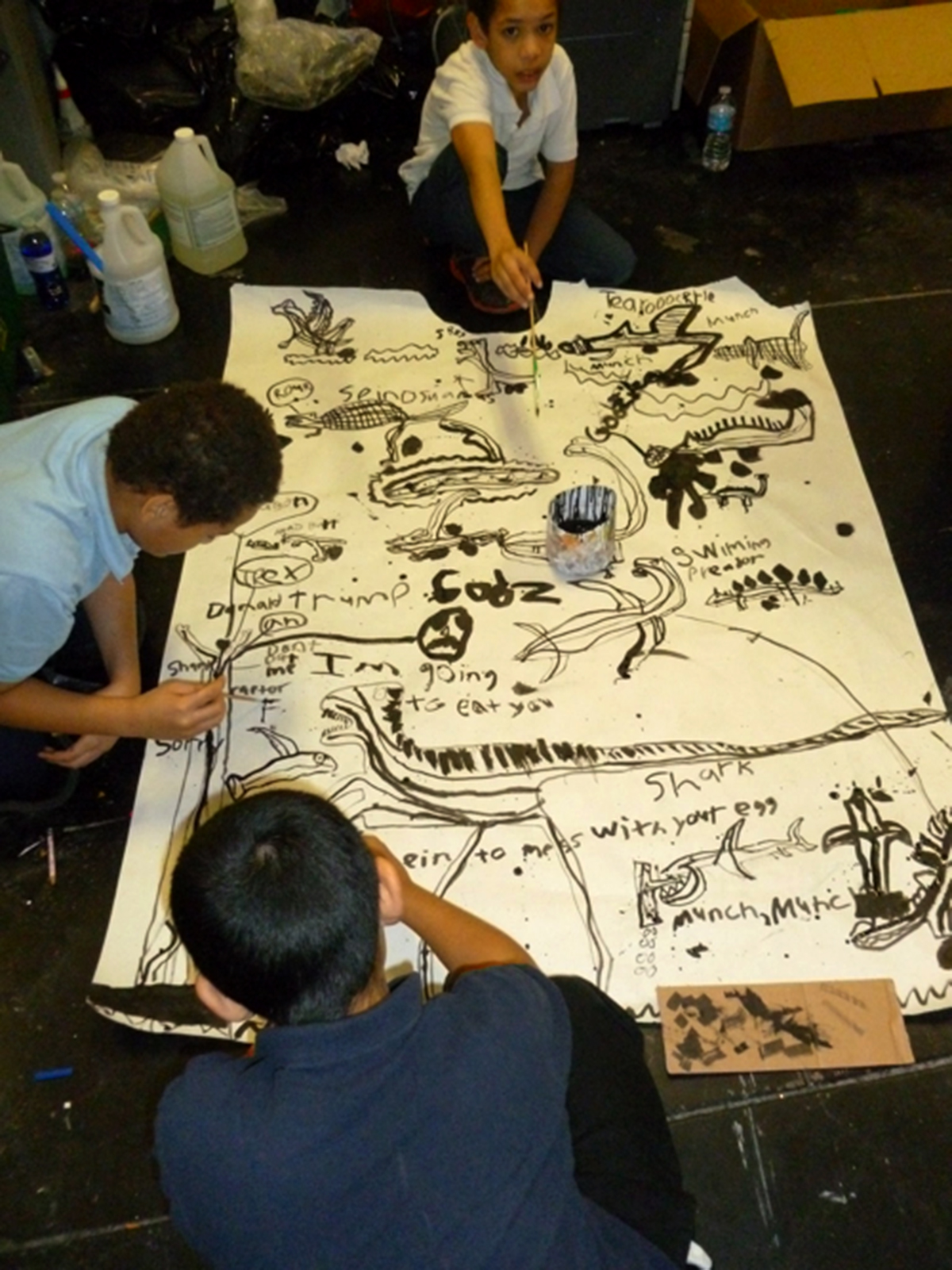
Goals and Objectives
- Students will explore how contemporary art processes help us reflect on and share our personal narratives and identities.
- Students will learn about universal human rights.
- Students will bridge their cross-curricular study of human rights in Language Arts with their investigation of contemporary art practices in Visual Art.
- Students will investigate how environments shape individuals.
- Students will reflect on how stereotypes can influence behavior.
Guiding Questions
- Why are human rights important to uphold for all human beings?
- In what ways are you a chameleon in your various environments?
- Can you think of a personal experience in which you found yourself relating to someone else’s story or perspective?
- How can we create art from the stories of our internal struggles and the challenges we face when blending into our various environments?

Documentation + Assessment
- Students individually documented spaces using photography.
- Students collaboratively documented the performance aspect of the project.
- Students were assessed on how well they worked together to stage and document the performances.
- Students generated lists of student roles (student photographers, students in the photograph, etc.) and monitored, to the satisfaction of the student artist posing in the picture, how the poses aligned to the title and idea of the artwork.
- Students submitted writing that demonstrated their understanding of universal human rights and personal privilege.
- Students participated in viewing and discussing images collectively, sharing their insights via teacher-led question and answer sessions.
Learning Activities
Step 1
You are a Chameleon
Teacher shares a story on the qualities of chameleons and asks students to consider how they are like chameleons. What do chameleons do? Students map characteristics of chameleons and how their behavior changes in different environments. Students then connect how they act as chameleons socially, behaving differently according to specific contexts.
Step 2
Build Understanding of Human Rights and Privilege
Students learn about human rights in their Language Arts class, examining the Universal Declaration of Human Rights and reflecting, through small group discussion, on how these rights pertain to all humans. Teacher assigns articles on human rights in order to broaden students’ perspectives about the lives of other people around the world.
Step 3
Contemporary Art Connection
Teacher presents performance artist Liu Bolin, who physically and visually blends himself into different environments in his work. Students reflect on the concept of blending in, identifying the ability of blending in and adapting to different environments as a form of privilege.
Step 4
Choose an Environment
Ask students to find a space where they want to blend in / disappear / escape: What is one place where you can become a chameleon? Students photograph images of these spaces on their own, outside of class. Photographed spaces include street corners, homes, bedrooms, or the school.
Step 5
Share Your Privilege
Back in the art classroom, students project the images of the spaces they selected while standing in front of the projections in front of the class. As each student chooses an area in the projected image to occupy, they proclaim their desired location with statements such as, “I want to be in the middle of the bed,” and “I want be in the center of the Virgin of Guadalupe in my bedroom.” Students work collaboratively to stage the images, taking turns photographing each student standing in front of their projections.
Step 6
Reflect
Students reflect on their shared experience of becoming chameleons, embracing their privilege of selecting their environments and choosing how to blend into those environments. Teacher asks students to notice qualities of the shared experience, common choices in location, etc., and how these qualities speak to a shared desire of being visible or invisible. In small groups, students discuss how humans react when their universal rights are challenged.
Step 7
Tell Your Story
Students write personal stories that connect their ideas of privilege, the power of blending in, and the visual images they created. Teacher emphasizes the importance of student voice in adapting to challenges, and encourages students to view their power of becoming invisible or visible whenever desired as a distinct privilege.
Step 8
Connect
Students share their personal stories from Step 7 and discuss how their lives compare to those of the characters they have been learning about in their assigned readings. Students express their final thoughts about the connections between human rights and privilege in writing. Teacher reinforces the concept of a privilege continuum that is multidimensional and dependent on individual experiences.
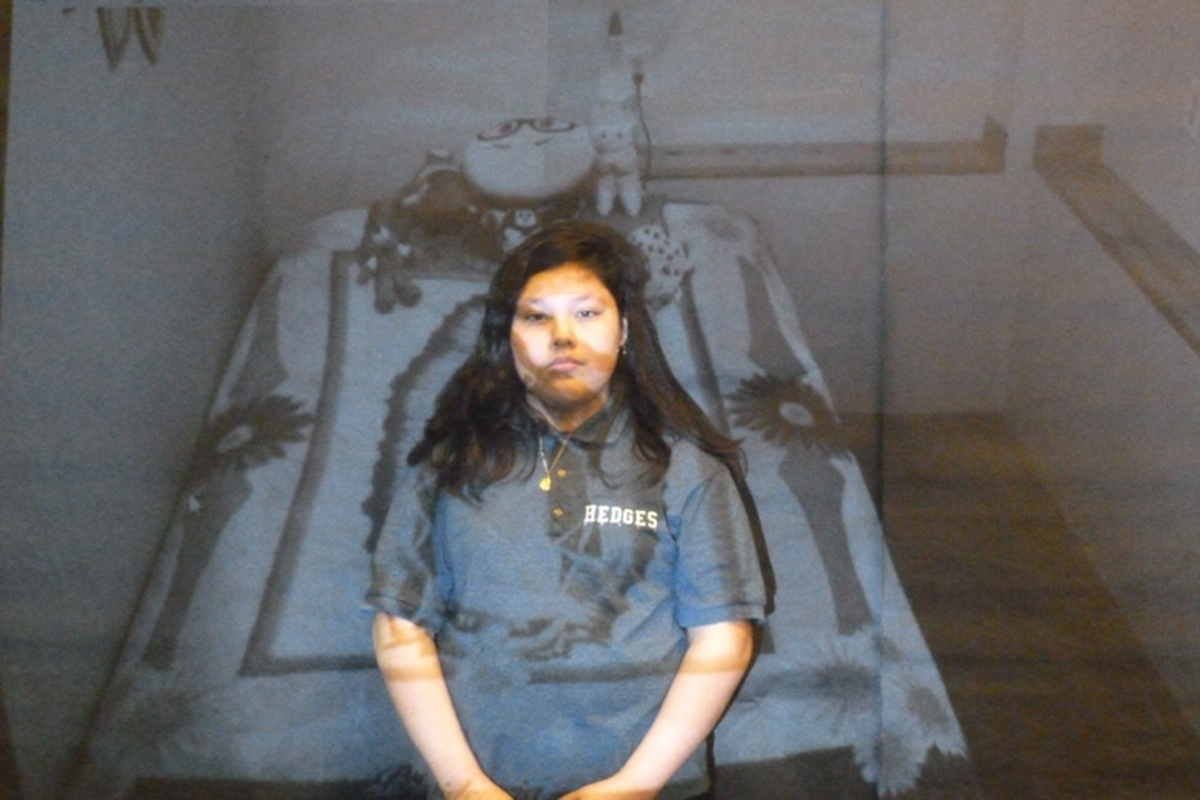
Materials
- Cell phones and cameras
- Projector
- Paper and pens for notes, documenting ideas, and writing reflections
- Computers for research
MCA Connections
The MCA served to ground the students in an understanding of contemporary art. I used examples of artwork from the MCA to demonstrate how artists are creating an awareness about social issues using a variety of different media to express themselves. A big revelation for students is that art doesn’t always have to look exactly like the object it visually represents. The content of the work in the museum validates our conversations because it shows students how their lived experiences are valid sources for artmaking. The museum has a huge impact in supporting how we live our teaching practice.
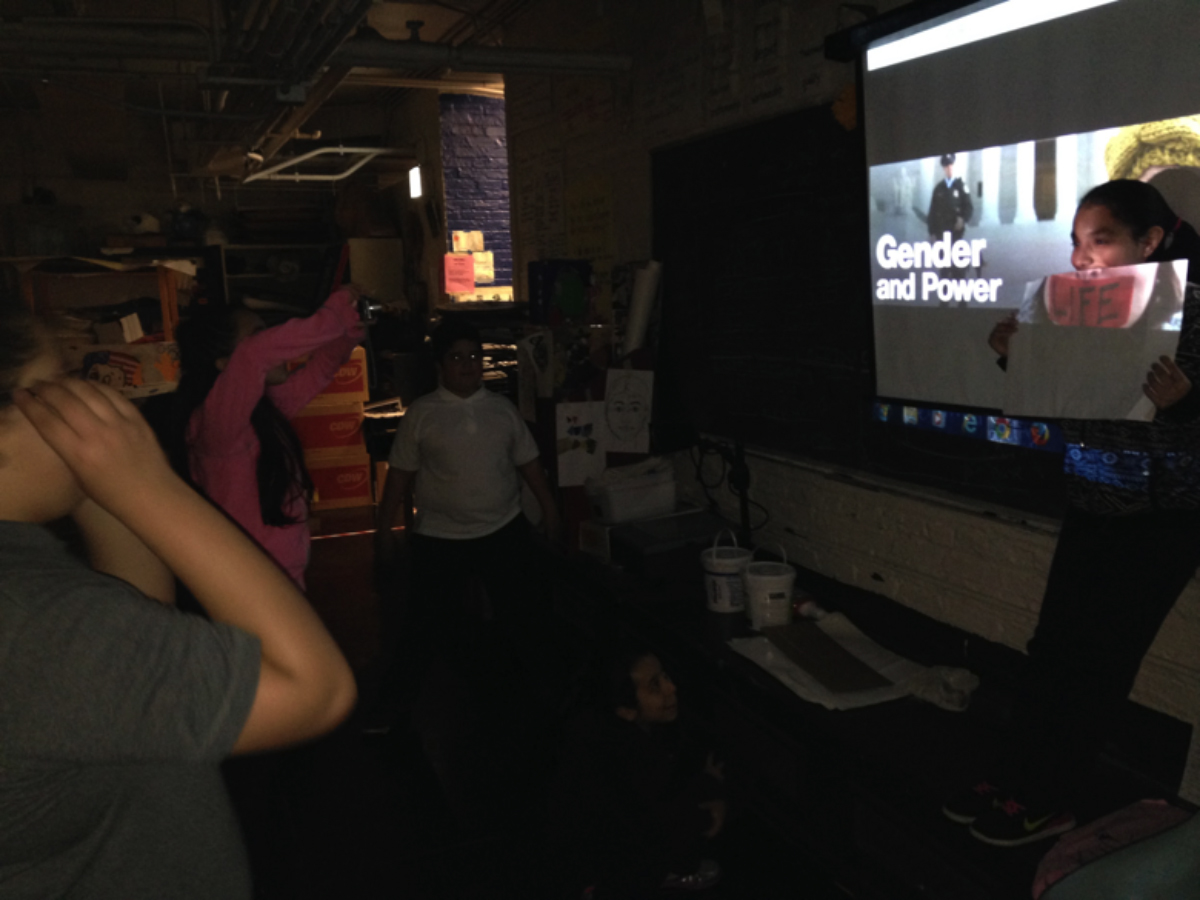
References + Resources
- Liu Bolin TED Talk and Daily Mail article, "The Invisible Man Returns"
- Vicente Jasso, 2014 Video and article, "Little Village street artist wants to engage community with his art"
- Ai Weiwei: “The Case for Ai WeiWei” and “The Artist and the City — Ai Weiwei on Beijing: It’s a prison for freedom of speech”
- Kerry James Marshall, Mastry, 2016
- Rebecca Zissou, “21st Century Slaves,” Junior Scholastic, March 30, 2015, 6-11.
- Kristin Lewis, “Shattered Lives,” Scholastic Scope, January 2015, 4-10.
- Kristin Lewis, “A Child Slave in California,” Scholastic Scope, September 3, 2012, 10-15.
- Laura Modigliani, “Sweet Sounds of Trash,” Scholastic News, April 22, 2013, 4-6.
- The Universal Declaration of Human Rights
Jequeline Salinas and Lilia Ruiz
James Hedges Elementary School
Jequeline Salinas
Jequeline Salinas is the visual arts teacher at Hedges Fine and Performing Arts School, a PreK-8th Grade Chicago Public School located in the Back of the Yards Neighborhood. She earned her BA in Art Education at the University of Illinois At Chicago in 1995.
Jequeline was born and raised in the Pilsen Neighborhood in Chicago. She has been the recipient of many grant awards throughout her career, which she credits to role models and mentors that have inspired her practice and philosophy in teaching. At her core lies a deep passion for young students to learn the language of the arts while instilling the self-realization of the power of the arts in problem solving, creating change, and building logic and reasoning across subject areas.
She strives to awaken the conscience and sensibility of her young learners through their own personal journey in learning about life, society, and the complexities of growing up in a bicultural setting. Embedded in her practice is the presence of community building and honoring cultural perspectives. Her reflections and knowledge about her students’ everyday lives and challenges provide her opportunities to explore and expand on the ideas of identity, personal perspectives, society, and culture through critical inquiry. Her mission is to implement a wide variety of art forms through experiential knowledge, starting with the youngest age students.
Lilia Ruiz
After graduating with a BS from the University of Illinois at Chicago, Lilia Ruiz moved to Mexico and taught ESL (English as a Second Language) for 2 years. This experience inspired her to become a Bilingual teacher and entrepreneur upon her return. She taught 7th grade at Gary School in the Little Village community for 8 years. During this time, she also opened an ESL school in her community. Meanwhile, she continued to pursue her academic growth and obtained her Master of Science in Education from Quincy University with Middle School and ESL endorsements. She is currently teaching at Hedges School in the Back of the Yards neighborhood where she has been a teacher for the past 8 years.
She lives in the Little Village community with her husband of 25 years and her three children and three dogs. She cannot imagine a life that doesn’t include reading every day and makes it her mission to make sure that children feel this way as well.
Jequeline and Lilia reflect on their process
Students have to awaken their understanding of their individual power to be thinkers and doers in their lives. As students mature and discover their own identity, this power is determined, in part, by an awareness of their own potential to adapt to challenges. Everyone, across age levels, views privilege in different ways. Despite our assumptions, we can learn to explore different perspectives through collaborative artmaking. We tell stories, we share our lived experiences, and we express our different points of view as we start to question our own sense of privilege.
This project uncovered how much students have to offer, and how open and revealing they can be about their lived experiences if someone asks them. It was challenging to evolve the conversation each day and open up difficult discussions with students about their identities and behaviors, but we learned to be prepared for hard conversations and take things organically as they emerged.
